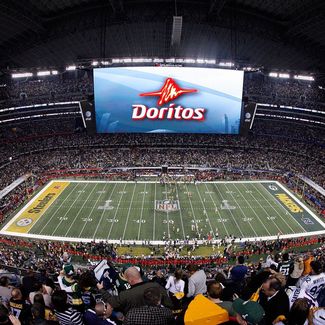
Lessons from Super Bowl: To repeat, to wear out or to retire
The chief customer officer of System1 dives into how brands should look at seasonal ads and build lasting, ongoing campaigns
15 February 2023
The Super Bowl is over for another year. Now what?
It’s the question that every advertiser who paid the big bucks for a big game spot has to ask themselves. And it applies more generally too. Britain doesn’t have a Super Bowl of its own, but it has Christmas as a focus for advertising. Asian markets have the Lunar New Year. The whole world tunes into the Olympics and the World Cup. Increasingly the calendar of advertising is organised around these massive cultural events.
With media platforms so diverse and attention so diffuse, it’s no surprise brands invest so much on these moments where focused engagement and wide reach really is available. But that leaves the question of what happens when the moment passes and you have a highly expensive but very specific bit of creative on your hands. How do you make that creative asset last and get more for your money?
An event ad has limited footprints in time and across media. Media isn’t the issue here, though. By now, most brands know their way around an integrated, cross-platform campaign that makes sure a piece of hero creative like a Super Bowl or Christmas ad makes the widest possible impact. The problem is that brief time span for relevance. In the worst-case scenario - a single-serve event like the Super Bowl - you’re creating a multi-million dollar ad which is only relevant for a handful of hours.
Brands have generally resolved this dilemma by trying to stretch their ad’s relevance before the big event. It’s become common practice now for US brands to release their game day ads digitally a week or two before the Super Bowl - this year, over half the night’s ads had been pre-released like this. Over in the UK, we’ve seen Christmas ads creep back earlier and earlier with some now coming out before Halloween - Very.co.uk took that approach in 2022 with an ad making a feature of the early release.
Brands also make liberal use of teasers for Super Bowl, Christmas, and other event ads. While extended releases of the full ad make sense, at System1 we’re less convinced most teasers are a good idea. The more positive emotion an ad creates, the more effective it tends to be - and that means resolving negative emotions and narrative tensions. But teasers often create those tensions and hold the best moments back, which leads to low effectiveness. Fundamentally, too, teasers and trailers for ads rest on an assumption that the public are vastly more interested in brands and ads than they really are.
Some teasers work brilliantly - Aldi’s Kevin The Carrot teaser for its latest Christmas ad got the maximum 5 out of 5 Stars in our testing, for instance. But most are an expensive distraction from their parent ad, not an enhancement.
So teasers don’t often work, and there’s a limit to how far in advance of an event you can release an ad. What else can you do? The most effective option is to make sure your ad has a long life after the event.
At System1 we recently ran some experiments looking at whether ads declined in effectiveness over time. We discovered that in general, they do not. Changes of campaigns and ads to avoid so-called wear-out are usually mistakes since wear-out is a myth. It follows that the more effective your ad or campaign, the longer you should run it. But this doesn’t happen, and event ads are partly to blame.
We uncovered the paradox of the big event ad. Brands often release their best, most emotional creative for these events. But then it has some of the shortest lifespan, airing for only weeks or months. This is a bigger problem in the UK, where the top ads are so tied to Christmas, than in the US, where Super Bowl ads are more likely to enjoy a long run. Even so, the best ads deserve far longer lives than they often get.
How can brands wriggle out of this paradox and get more bang for their event ad buck? One way is to be less shy of simply repeating ads. It’s largely unheard of to re-air a Super Bowl ad but Christmas classics like Coke’s “Holidays Are Coming” and Hershey’s “Jingle Bells” return year after year to immense goodwill.
If you can’t repeat the ads, though, you can repeat key elements. As Orlando Wood showed in his Lemon book, ads with repeated elements - what he calls Fluent Devices - are more effective and drive greater business effects than ads without them. But Fluent Devices went into decline in the 00s and 10s, and are only now beginning to slowly make a comeback.
We saw classic Fluent Device usage both last Christmas and at the Super Bowl. At Christmas in the UK, Kevin The Carrot returned with a hilarious ad and got a 5-Star test score for the fourth year running. At the Super Bowl, M&Ms got high publicity out of publicly ‘retiring’ their animated “spokescandies” only for them to return after the game and get one of the night’s best scores.
Fluent Devices are a way to build events into a lasting, ongoing campaign that builds in effectiveness, rather than being at the mercy of the event calendar. They take investment and time to build, which is partly why they declined. But give repeating characters and ideas that time and they’ll reward you with effective beyond the limits of any individual Christmas, Super Bowl, World Cup or any other big event.
Jon Evans is the Chief Customer Officer at System1




